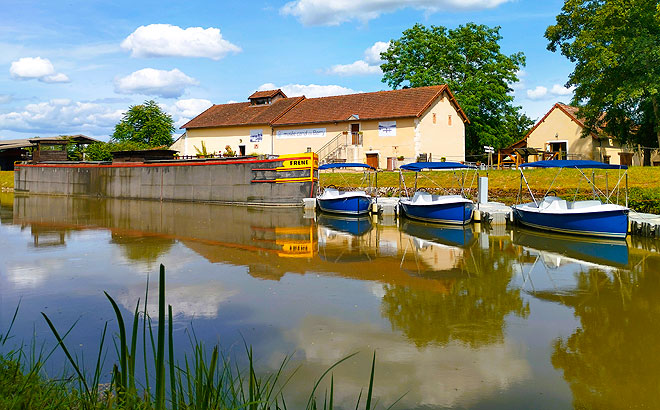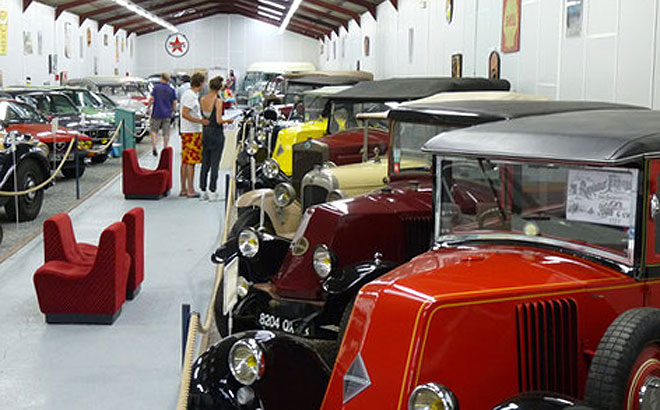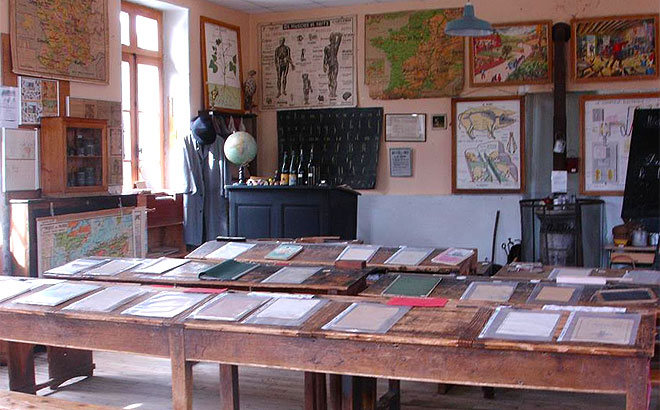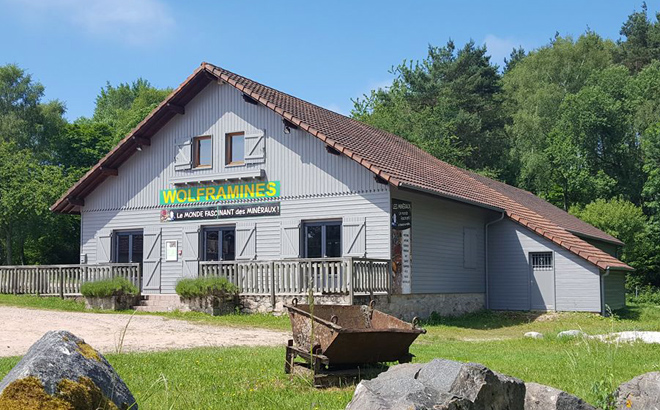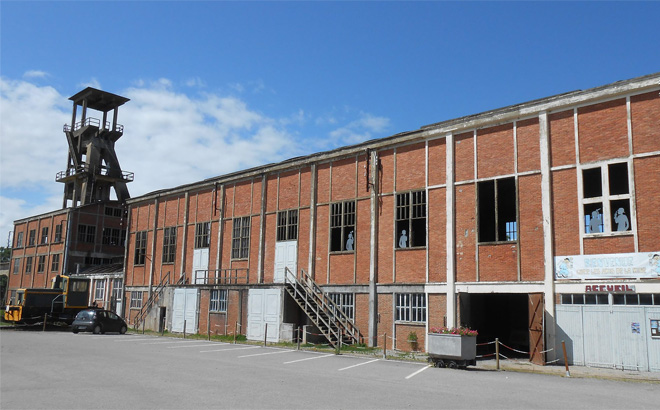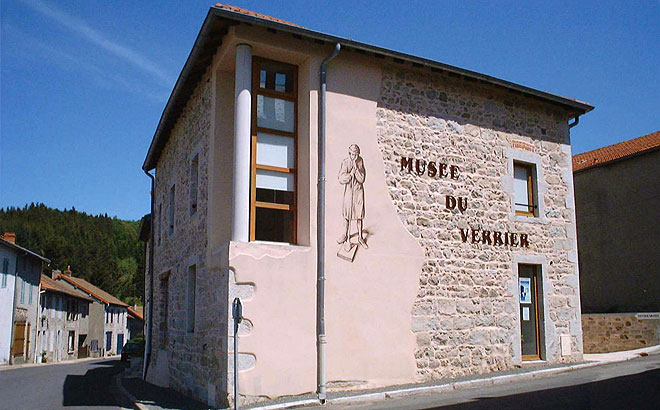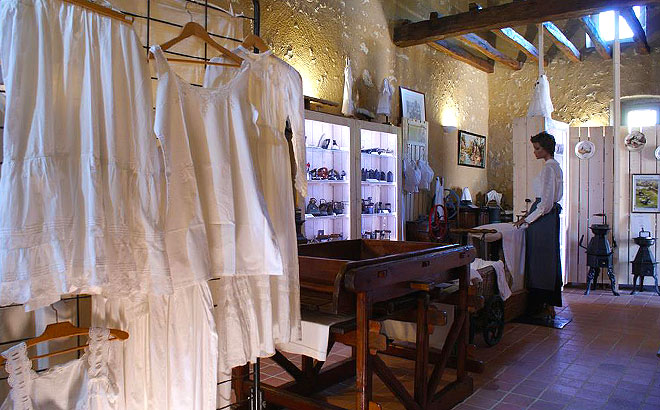15km north of Montluçon, on the site of a former waterworks, step back in time and discover the fabulous history of the Berry Canal, from its construction to its decommissioning. Whether you’re a water enthusiast, a beginner, or just a curious visitor, take a captivating dive into the world of watermen.
Animation :
In April, May, and June:
* Sundays, April 27, May 25, and June 15 at 3 p.m. // Walking Tour – “In the Footsteps of the Canalous”
The Berry Canal Museum invites you to follow in the footsteps of the Canalous, accompanied by Alain Gourbet, a local history enthusiast, on a 3-kilometer route between the port of Magnette and the Rouéron lock on Sundays, April 27, May 25, and June 15 at 3 p.m.:
– Departure from the Berry Canal Museum,
– Adults: €6 / Concessions: €4 / Free for children under 10
– Admission to the Berry Canal Museum included
Information: +33 4 70 06 63 72.
Unique in France, this “Souvenirs” car museum invites you to discover around fifty vehicles dating from the 1910s to the 1980s. Through a personalized presentation, each vehicle is placed in its context (political, cultural, social and sporting) and then offers a walk through the history of the automobile.
It’s a real immersion in a classroom installed in the old school dating from 1880 which opens to visitors! Here is the opportunity to rediscover the smell of purple ink, the blackboard on an easel, the round stove surrounded by a fence…A sensory visit which also invites you to discover the village of Châtelus through a circuit.
At Wolframines, discover the mineral world through a fun, practical, and educational approach and discover a sector with a unique subsoil! The latter constitutes a veritable mineral “vault.” Nearly 80 different mineralizations have been recorded there, making this site one of the very first French deposits. At the museum, audiovisual show, exhibition rooms, discovery workshops for young and old, excavations, puzzle game, allow an active discovery of the mineral kingdom. But that’s not all!….. Field activities are also on the program throughout the year: searching for minerals in quarries, a unique opportunity to “penetrate” the mysteries of the Bosse subsoil, introduction to panning, to discover the sand of the Sioule in an original way, Géorandos, or how to decipher landscapes.
Animation :

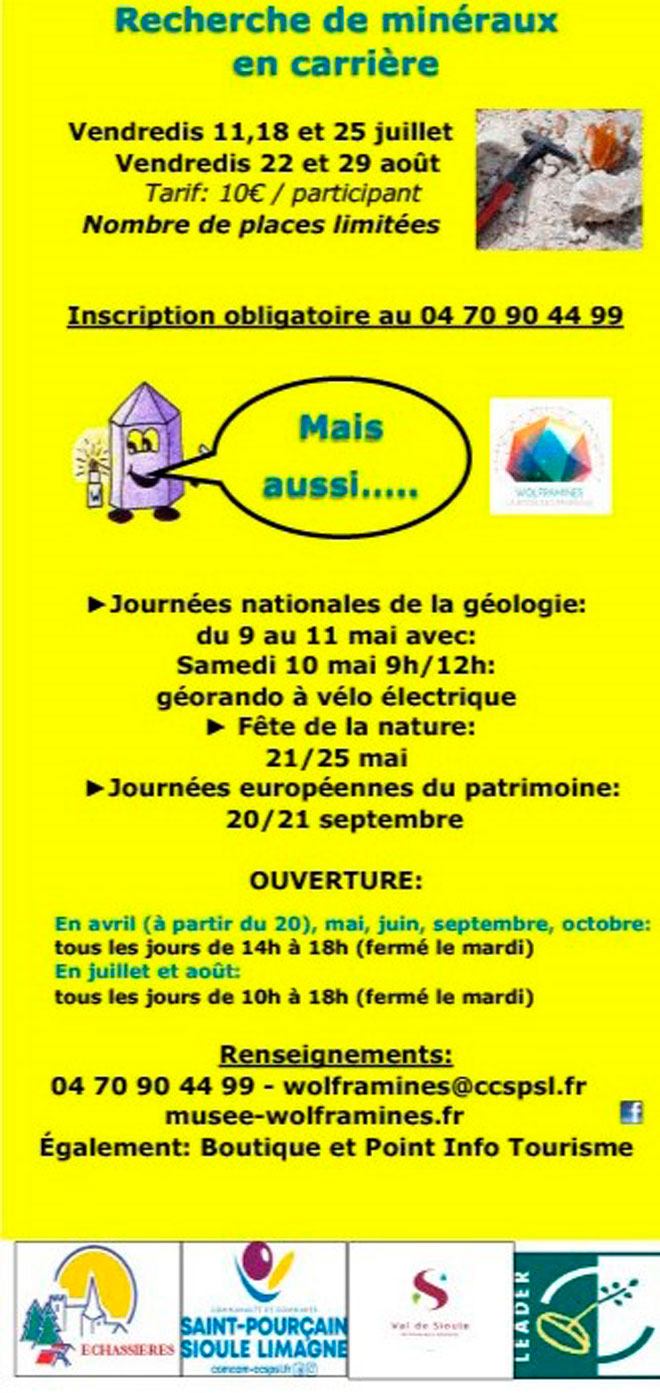
As part of an ancient timbered house of the eighteenth century, likely ” bank sailors ” have greeted the Compagnons du Devoir, the first museum dedicated to building France presents permanent exhibitions related to the past and the evolution of each actor construction: techniques, tools, models, drawings, designs, know-how, window and instead of promoting various building trades.
The headframe and the mining building known as the “central shaft”, both built by Eugène Freyssinet, together with the site that surrounds them constitute the Mining Museum. Railway circuits in operation allow visitors to have an original first approach to the site. The museum also has a fabulous collection of mining equipment, both pneumatic and railway; a reconstituted mine of a modest but useful nature then makes it possible to complete the outdoor route. Finally, the exhibition of small tools and didactic material in the hot room completes the visit. Route punctuated by explanatory panels on the history of the Noyant mine, coal and the men who practiced it.
In addition to the guided tour: visit of the reconstructed galleries.
In Saint Nicolas des Biefs, the Glass Museum presents the history of the Gentlemen Glassmakers who settled there in 1660 to establish a major forest glassworks on the plateau, still called “La Verrerie” today, whose furnaces operated until 1780. An archaeological area presents a full-size reconstructed furnace from the period. Numerous archaeological pieces reveal the manufacturing of the period in the decorative setting of a large mural. And a glass gallery allows visitors to discover unusual objects or those from a variety of French and foreign glassworks. A second mural reproduces drawings from Diderot and D’Alembert’s Encyclopedia showing glassmaking in the 17th and 18th centuries.
This museum offers an exceptional chronology of irons from all countries, or almost, and from all eras. It presents the methods used from 206 BC to the present day to straighten linen. From the Chinese saucepan to the electric prototype of 1882, the iron has followed the evolution of energies: hot sand, gas, alcohol, oil…

